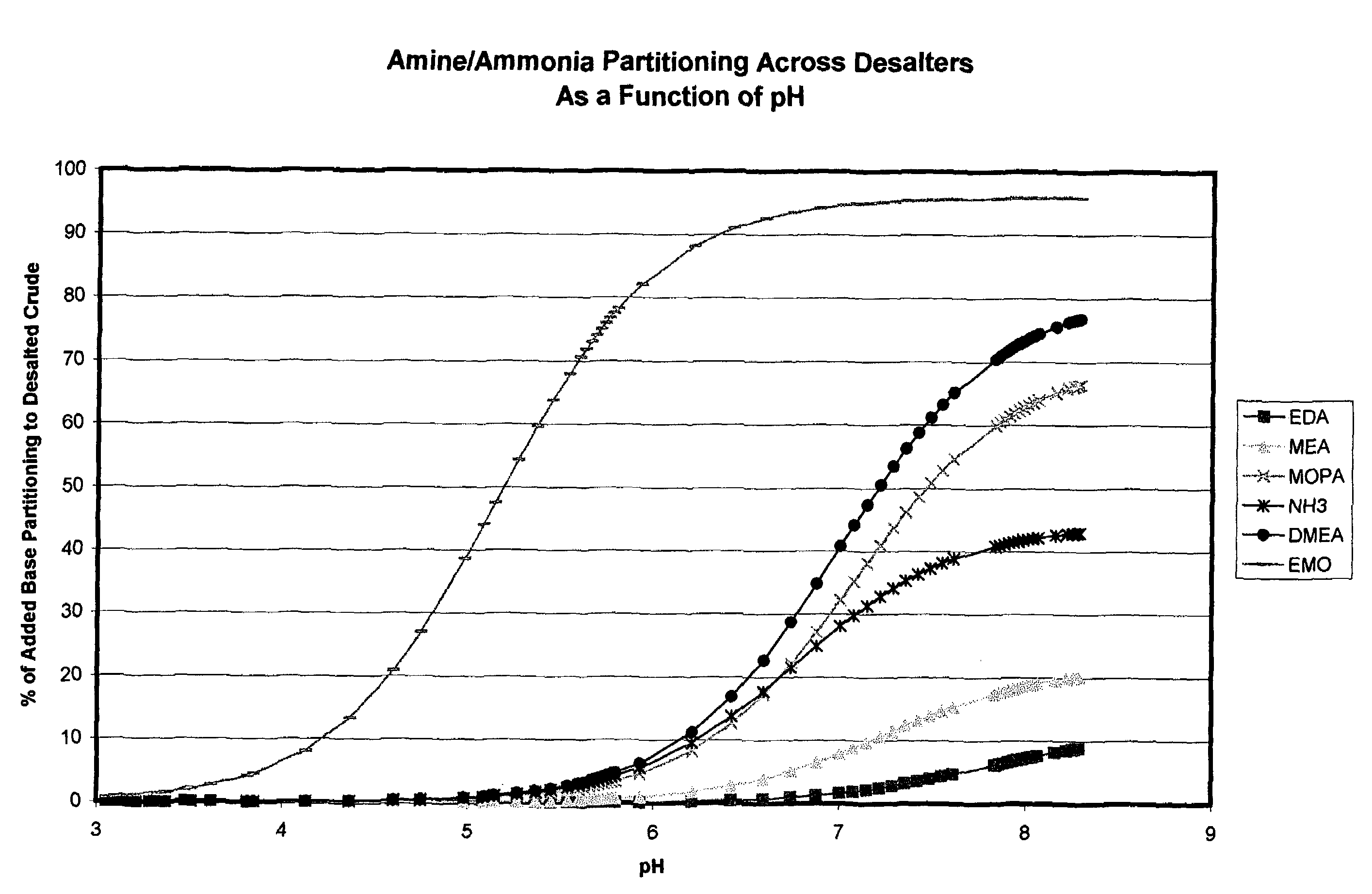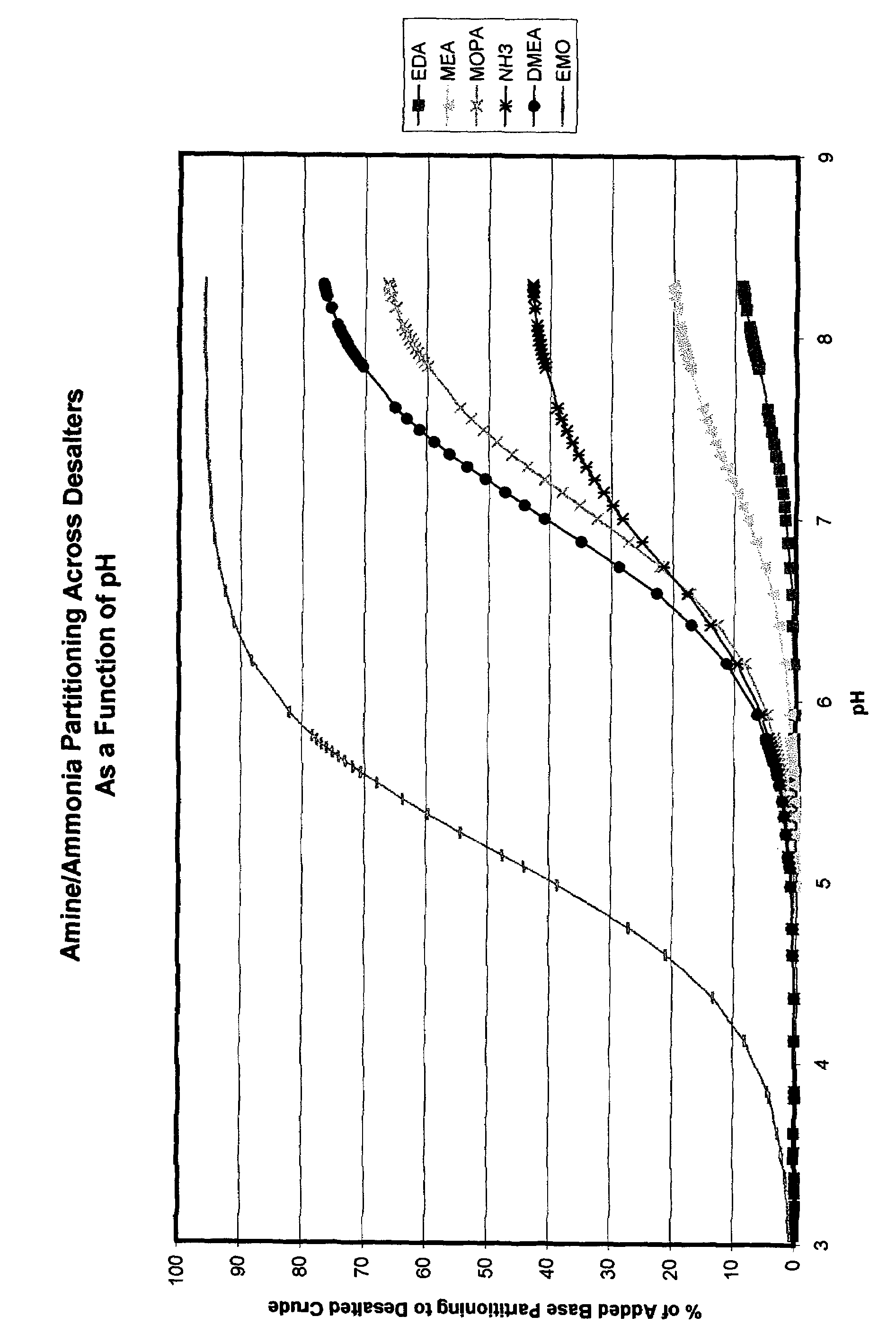Additives to enhance metal and amine removal in refinery desalting processes
a technology of additives and desalting processes, which is applied in the direction of dewatering/demulsification with chemical means, separation processes, and refining by water treatment, etc. it can solve the problems of oil and water emulsions that are difficult to resolve, rag layer inside the desalt vessel may grow to such an extent, and particle solids can complicate the desalting process
- Summary
- Abstract
- Description
- Claims
- Application Information
AI Technical Summary
Benefits of technology
Problems solved by technology
Method used
Image
Examples
Embodiment Construction
[0028]The inventors have discovered that the addition of glycolic acid (hydroxy-acetic acid) and other water-soluble hydroxyacids to a crude oil can significantly reduce the amount of calcium and other metals and / or amines in the hydrocarbon when it is run through a desalter in a refinery. The inventors have compared the “normal” desalting on a reference crude oil containing higher than normal amounts of calcium and found minimal calcium removal. The addition of glycolic acid in levels of up to a 5:1 ratio with calcium, results in much lower metals and / or amine content of the desalted oil. The levels of metals other than calcium such as iron, zinc, silicon, nickel, sodium and potassium are also reduced. The removal of particulate iron in the form of iron oxide, iron sulfide, etc. is a specific, non-limiting embodiment of the invention. By “removing” the metals and / or amines from the hydrocarbon or crude is meant any and all partitioning, sequestering, separating, transferring, elimi...
PUM
| Property | Measurement | Unit |
|---|---|---|
| total volume | aaaaa | aaaaa |
| total volume | aaaaa | aaaaa |
| total volume | aaaaa | aaaaa |
Abstract
Description
Claims
Application Information
 Login to View More
Login to View More - R&D
- Intellectual Property
- Life Sciences
- Materials
- Tech Scout
- Unparalleled Data Quality
- Higher Quality Content
- 60% Fewer Hallucinations
Browse by: Latest US Patents, China's latest patents, Technical Efficacy Thesaurus, Application Domain, Technology Topic, Popular Technical Reports.
© 2025 PatSnap. All rights reserved.Legal|Privacy policy|Modern Slavery Act Transparency Statement|Sitemap|About US| Contact US: help@patsnap.com



